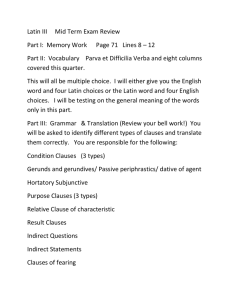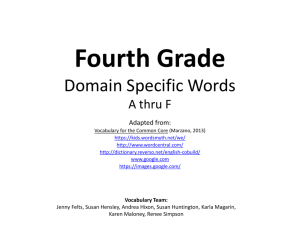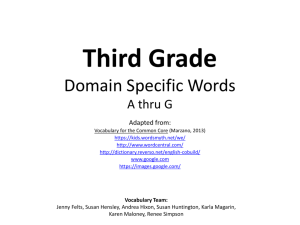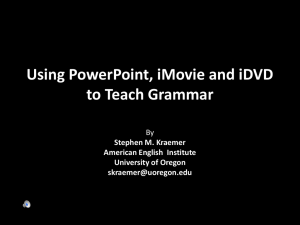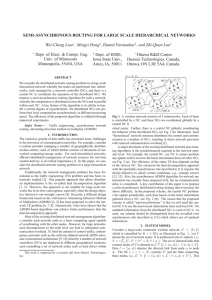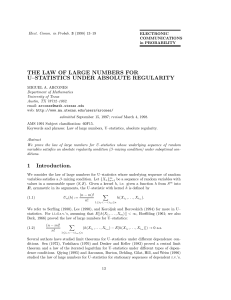l 1 Introduction
advertisement
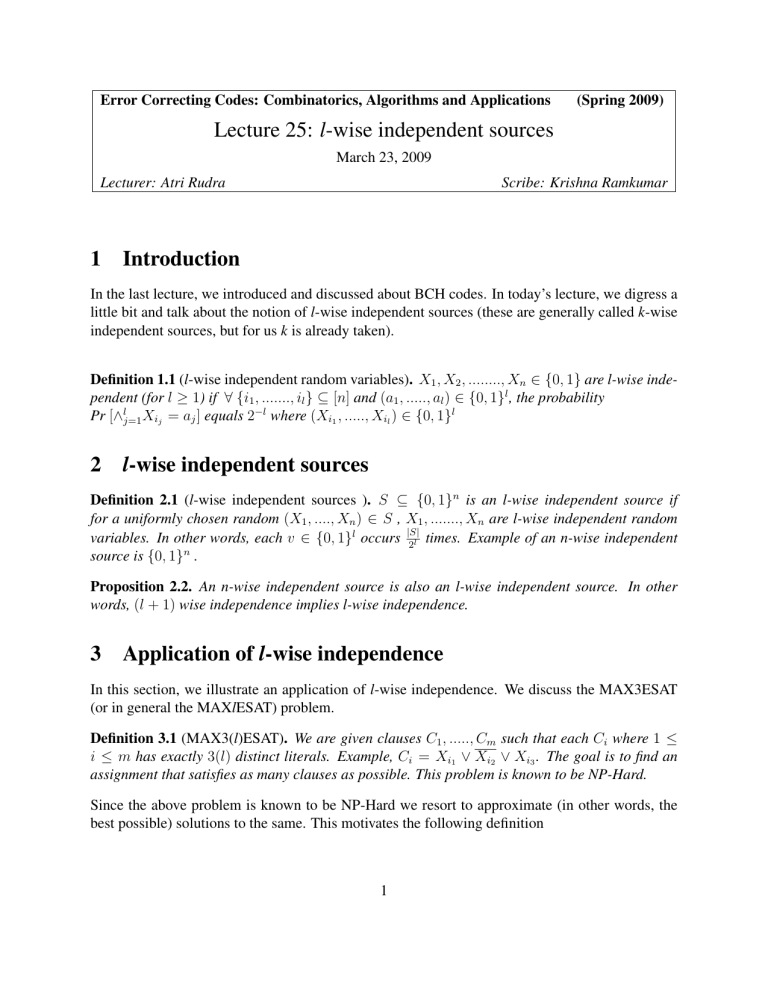
Error Correcting Codes: Combinatorics, Algorithms and Applications
(Spring 2009)
Lecture 25: l-wise independent sources
March 23, 2009
Lecturer: Atri Rudra
1
Scribe: Krishna Ramkumar
Introduction
In the last lecture, we introduced and discussed about BCH codes. In today’s lecture, we digress a
little bit and talk about the notion of l-wise independent sources (these are generally called k-wise
independent sources, but for us k is already taken).
Definition 1.1 (l-wise independent random variables). X1 , X2 , ........, Xn ∈ {0, 1} are l-wise independent (for l ≥ 1) if ∀ {i1 , ......., il } ⊆ [n] and (a1 , ....., al ) ∈ {0, 1}l , the probability
Pr [∧lj=1 Xij = aj ] equals 2−l where (Xi1 , ....., Xil ) ∈ {0, 1}l
2
l-wise independent sources
Definition 2.1 (l-wise independent sources ). S ⊆ {0, 1}n is an l-wise independent source if
for a uniformly chosen random (X1 , ...., Xn ) ∈ S , X1 , ......., Xn are l-wise independent random
variables. In other words, each v ∈ {0, 1}l occurs |S|
times. Example of an n-wise independent
2l
source is {0, 1}n .
Proposition 2.2. An n-wise independent source is also an l-wise independent source. In other
words, (l + 1) wise independence implies l-wise independence.
3
Application of l-wise independence
In this section, we illustrate an application of l-wise independence. We discuss the MAX3ESAT
(or in general the MAXlESAT) problem.
Definition 3.1 (MAX3(l)ESAT). We are given clauses C1 , ....., Cm such that each Ci where 1 ≤
i ≤ m has exactly 3(l) distinct literals. Example, Ci = Xi1 ∨ Xi2 ∨ Xi3 . The goal is to find an
assignment that satisfies as many clauses as possible. This problem is known to be NP-Hard.
Since the above problem is known to be NP-Hard we resort to approximate (in other words, the
best possible) solutions to the same. This motivates the following definition
1
Definition 3.2 (α-approx algorithm). For any α where 0 ≤ α ≤ 1, an algorithm that always
satisfies greater than or equal to α-fraction of the maximum number of satisfiable clauses is an
α-approx algorithm for MAX3ESAT (It is to be noted that 1-approx is NP-Hard for any l greater
than or equal to 2).
Question: So what is the largest α-approx that can be achieved?
A 78 -approx algorithm for MAX3ESAT. In general, (1 − 2−l )-approx algorithm for MAXlESAT.
Observation: For each i, pick Xi = 0 with probability 21 independently. For a fixed i (where
1 ≤ i ≤ m), the probability that a clause is satisfied is given by
P r[Ci is satisf ied] =
7
8
(for 3-wise independent random variables)
By linearity of expectation (where the expectation is over the choice of random variables),
the expected number of satisfied clauses equals 7m
. This implies that there exists an assign8
7
ment that satisfies greater than or equal to 8 fraction of the clauses. Note that for a clause
Ci = Xi1 ∨ Xi2 ∨ Xi3 , the choices for Xi1 , Xi2 , Xi3 need to be independent. For this, the solution is to pick a random assignment from an l-wise independent source.
In the next lecture, we will see that the dual of the BCH2,logn,l+1 is an l-wise independent source.
By the bounds on the dimension of these codes, this means that there exists an l-wise independent
l
source of size O(nb 2 c ) (For example, O(n) size for 3-wise independence). Further, as these codes
are linear codes, each codeword can be generated in time O(n2 ). This implies that we have an
l
1 − 2−l approximation algorithm for MAXlESAT that runs in time O(n2+b 2 c ).
2

